-
-
Services
Reservation Services
VIP Services
-
Business Travel
-
About Iran
History of Qeshm Island
Qeshm Island, the largest island in the Persian Gulf, has a long and rich history due to its strategic location along ancient trade routes. The island has been inhabited since prehistoric times and has seen the influence of various civilizations, including Persian, Arab, Portuguese, and British powers. Throughout history, Qeshm has served as a vital center for trade, fishing, and maritime activities, shaping its unique cultural and historical identity.
Historical and Cultural Attractions
Qeshm Island is home to numerous historical sites, including Portuguese forts, ancient mosques, and traditional villages that reflect its diverse cultural heritage. Notable landmarks include the Portuguese Castle in Hormuzgan style, the Old Qeshm Bazaar, and centuries-old watchtowers that were used to protect the island from invaders. Visitors can explore these sites to gain insight into the island’s strategic importance and its blend of Persian Gulf cultures.
Natural Attractions and Qeshm Geopark
Qeshm is renowned for its extraordinary natural landscapes, making it a haven for eco-tourism and adventure. The island features stunning mangrove forests, salt caves, pristine beaches, and the iconic Stars Valley (Valley of the Stars). Qeshm Geopark, the first UNESCO-listed geopark in the Middle East, highlights the island’s unique geological formations, including volcanic rocks, caves, and canyons, attracting geologists and tourists alike. Together, Qeshm’s natural beauty, historical landmarks, and geological wonders make it a fascinating destination for travelers seeking culture, history, and nature in the Persian Gulf.
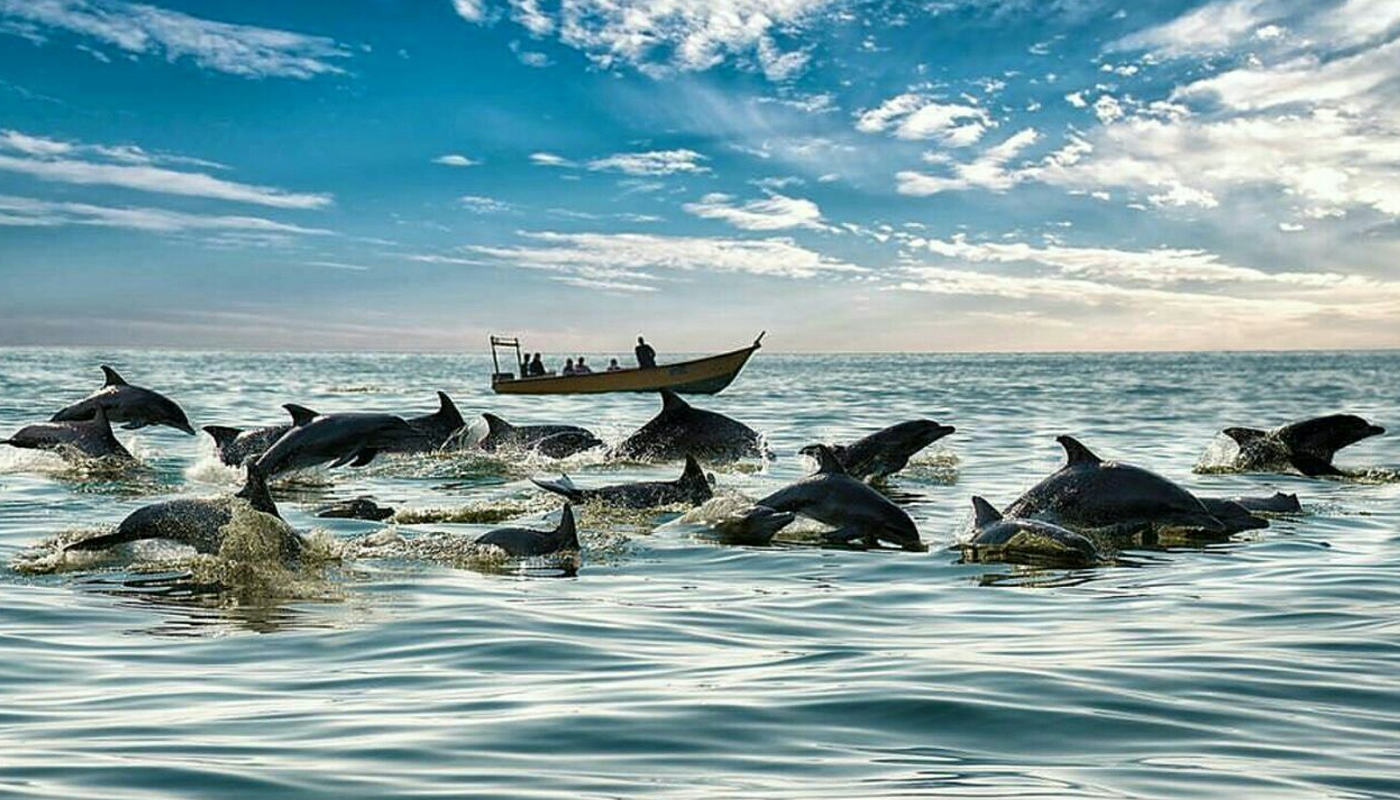
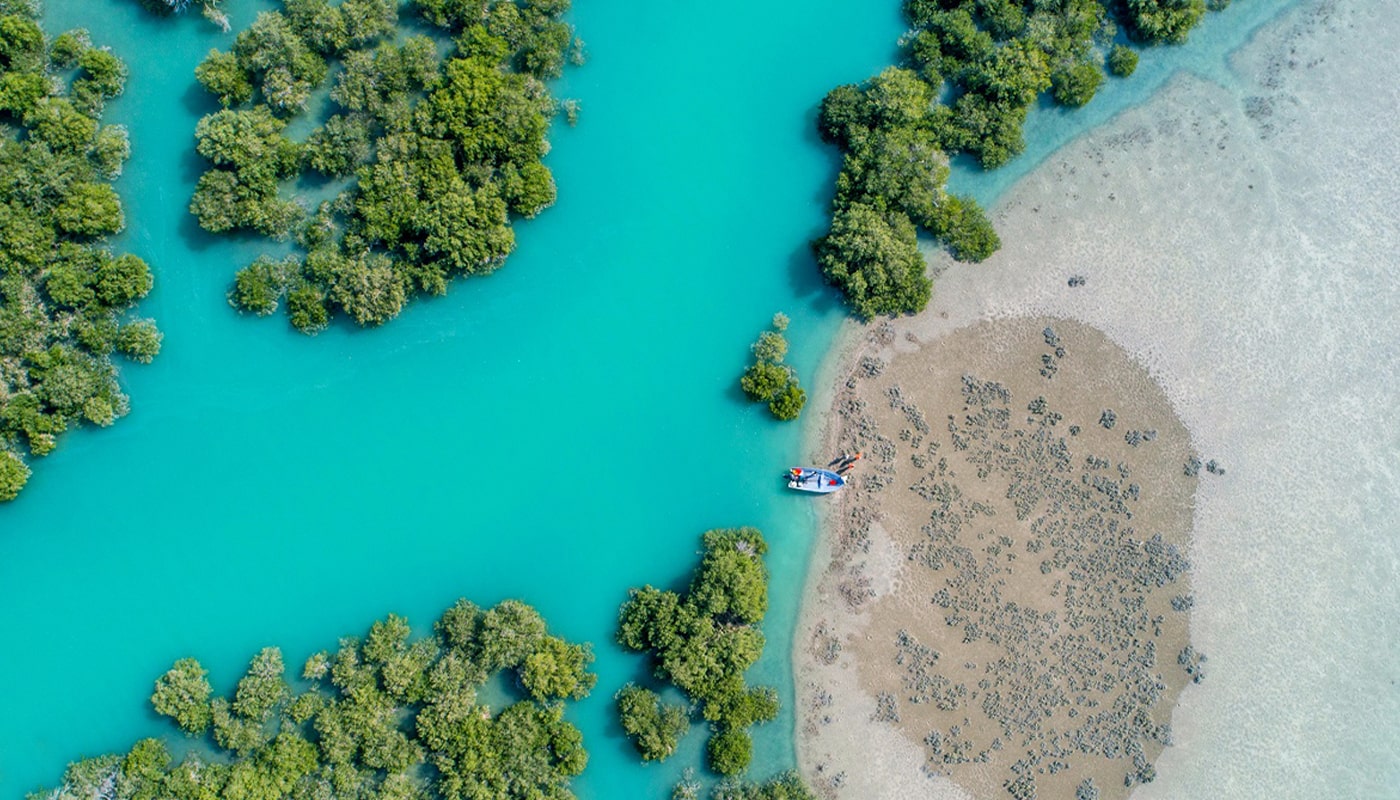
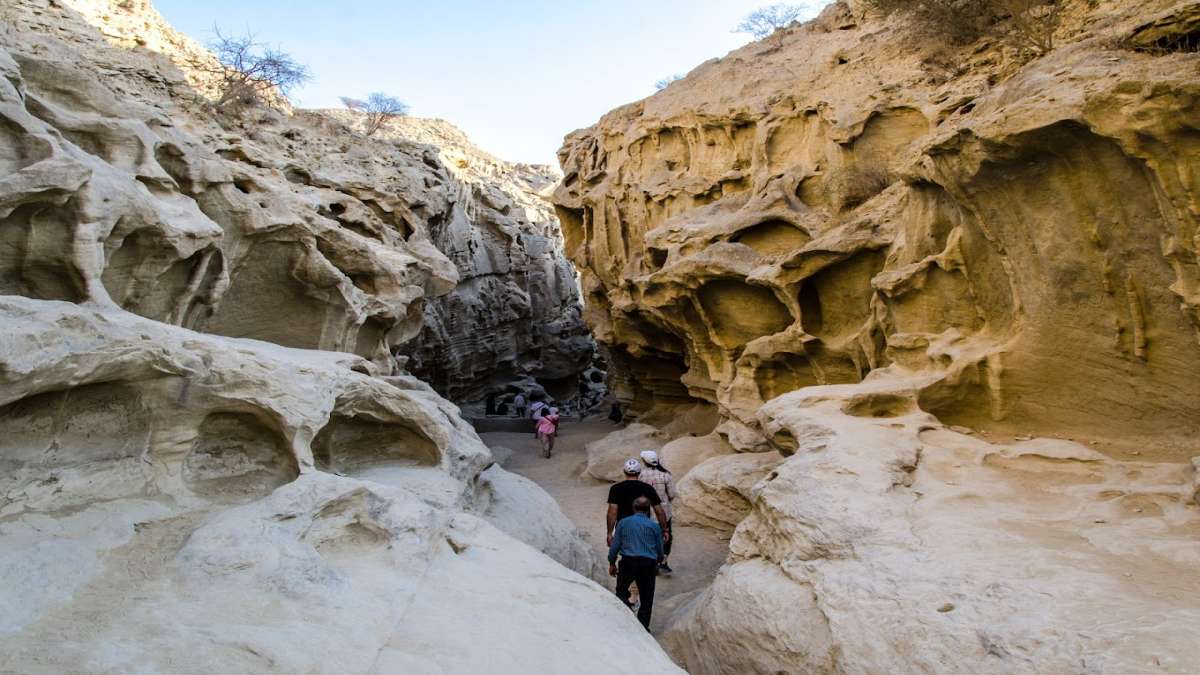

Hormuz Island, located in the Persian Gulf, is famous for its striking natural landscapes and vibrant cultural heritage. Known as the “Rainbow Island,” it features colorful soils and cliffs, red and orange mountains, and unique geological formations shaped by wind and sea over centuries. The island also has historical sites, including Portuguese forts and old trade structures, reflecting its strategic importance in the region. With pristine beaches, salt caves, and artistic local culture, Hormuz offers visitors a blend of natural beauty, history, and traditional life, making it a captivating destination in southern Iran.

Hengam Island, located in the Persian Gulf near Qeshm Island, is a small yet enchanting island known for its pristine beaches, crystal-clear waters, and rich marine life. The island is famous for dolphin watching, as pods of playful dolphins often swim near its shores, delighting visitors. Hengam also features hiking trails, traditional fishing villages, and unique natural landscapes, including rocky shores and mangrove areas. With its tranquil atmosphere, natural beauty, and opportunities for ecotourism, Hengam Island is a popular destination for travelers seeking relaxation and a close connection with nature in southern Iran.
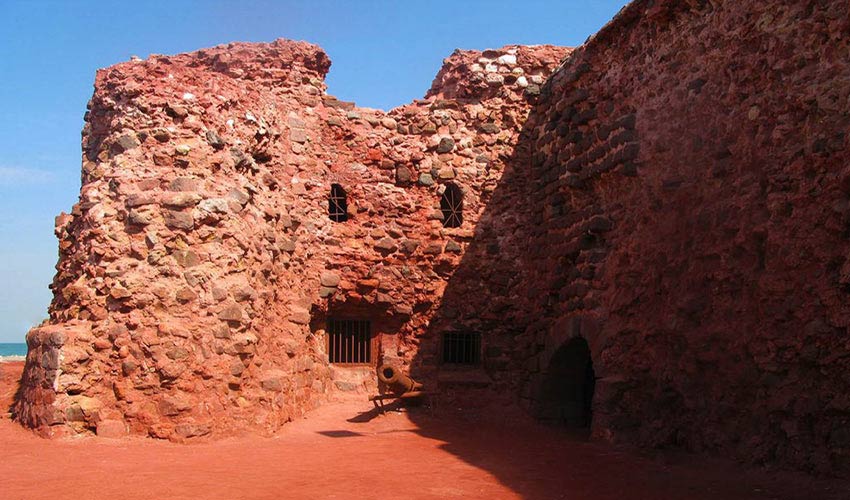
The Portuguese Castles on Qeshm and Hormuz Islands are historic fortresses built during the early 16th century when the Portuguese controlled parts of the Persian Gulf to secure trade routes. The castle on Hormuz Island, known as Hormuz Castle, and the one on Qeshm Island, often called Qeshm Portuguese Castle, were strategically constructed with thick walls, watchtowers, and defensive structures to protect against invasions and control maritime trade. Today, these forts stand as important cultural and historical landmarks, showcasing Portuguese military architecture and offering visitors a glimpse into the strategic significance of the islands during the age of exploration in the Persian Gulf.

Qeshm Geopark, located on Qeshm Island in the Persian Gulf, is the first UNESCO-listed geopark in the Middle East, recognized for its unique geological formations and diverse landscapes. The geopark features striking natural attractions such as the Valley of the Stars, salt caves, volcanic rocks, canyons, and mangrove forests, highlighting millions of years of geological history. In addition to its geological significance, Qeshm Geopark supports biodiversity and eco-tourism, offering opportunities for hiking, photography, and educational tours. It serves as a prime destination for travelers and researchers interested in nature, geology, and the extraordinary landscapes of southern Iran.

The Hara Forests, also known as the Mangrove Forests of Qeshm, are unique coastal ecosystems located along the shores of Qeshm Island in the Persian Gulf. These mangrove forests thrive in saline tidal waters, providing a habitat for diverse wildlife, including birds, crabs, and fish. The forests play a crucial role in protecting the coastline from erosion and supporting local fisheries. Visitors can explore the Hara Forests by boat, enjoy birdwatching, and experience the serene beauty of these lush, green landscapes surrounded by tidal waters, making them an important natural and ecological attraction in southern Iran.
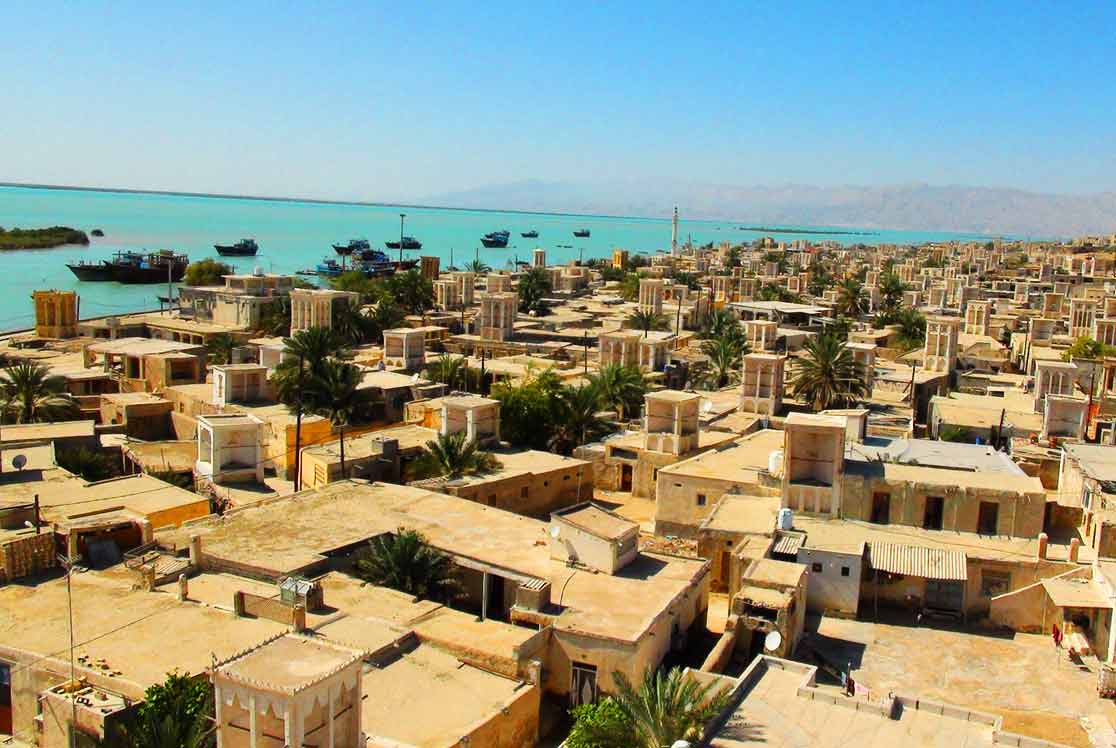
Laft Village, located on Qeshm Island in the Persian Gulf, is a historic coastal village renowned for its traditional architecture, ancient windcatchers, and maritime heritage. Built with coral stone and mud-brick, the village features narrow alleys, old houses, and a historic harbor that reflect its long history as a center for trade and fishing. Laft is also known for its unique qanat system, which provided water in the arid region for centuries. Surrounded by scenic beaches and salt flats, the village offers visitors a glimpse into the traditional lifestyle, culture, and architectural ingenuity of southern Iran.
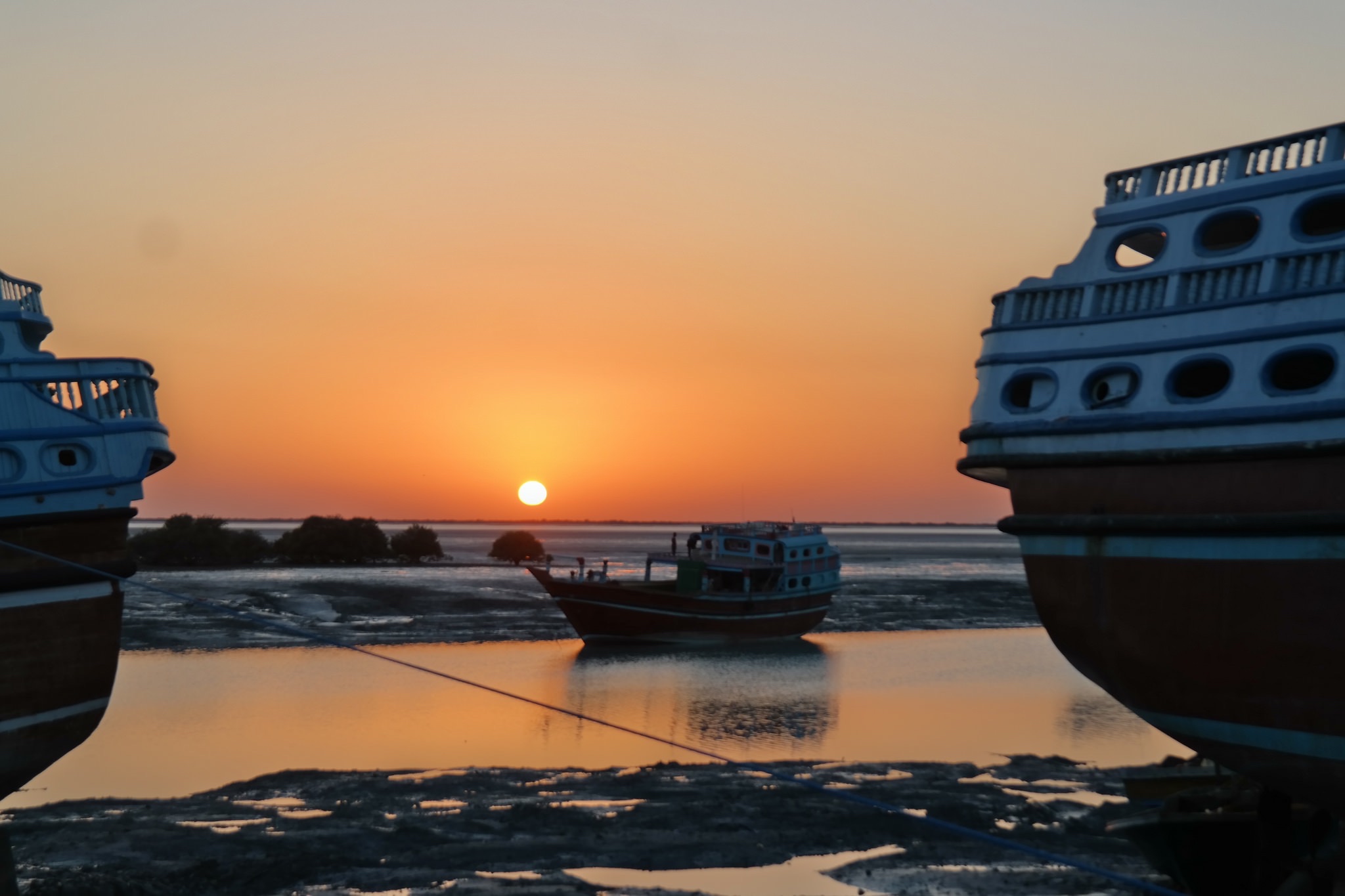
Dargahan is a bustling port city on Qeshm Island in the Persian Gulf, known as a major commercial and tourist hub. It is famous for its vibrant markets, shopping centers, and local bazaars where visitors can buy handicrafts, souvenirs, spices, and textiles. The city also serves as a gateway to nearby natural and cultural attractions, including beaches, mangrove forests, and traditional villages. With its lively atmosphere, convenient amenities, and proximity to both Qeshm’s tourist sites and transportation routes, Dargahan is an important destination for travelers seeking shopping, local culture, and access to the island’s scenic beauty.

Imam Qoli Khan was a prominent historical figure in southern Iran, particularly associated with the Safavid and early Qajar periods, known for his role in regional governance and development. He is most famous for constructing several strategic and architectural landmarks, including fortresses, caravanserais, and public buildings, which served both defensive and administrative purposes. His legacy reflects the political, military, and cultural influence he held in the Persian Gulf region, and many of the structures attributed to him, such as parts of Qeshm and Hormuz fortifications, remain important historical and tourist sites today.
+989301903026
+982166126539
Info@Rosha.Travel
Saturday - Thursday 09 Am – 05 Pm
Iran, Tehran, End of Keshavarz Blvd, Corner of Ghajar Alley, North Jamalzadeh St, No. 528, Unit 4, 2nd Floor